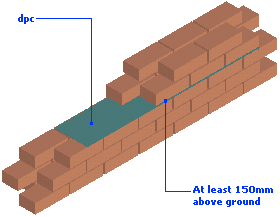Is there any furniture against it trapping the condensation? Is there a water pipe leaking buried behind the wall or outside guttering problem?Yorkie said:It's about 12 inches in diameter and
about 6 inches above the skirting board. It is easily visible, and
feels cold to the touch, yet the wallpaper is still in perfect order
so we've left it alone for the time being.
The dpc prevent rising damp from the ground, more details here


